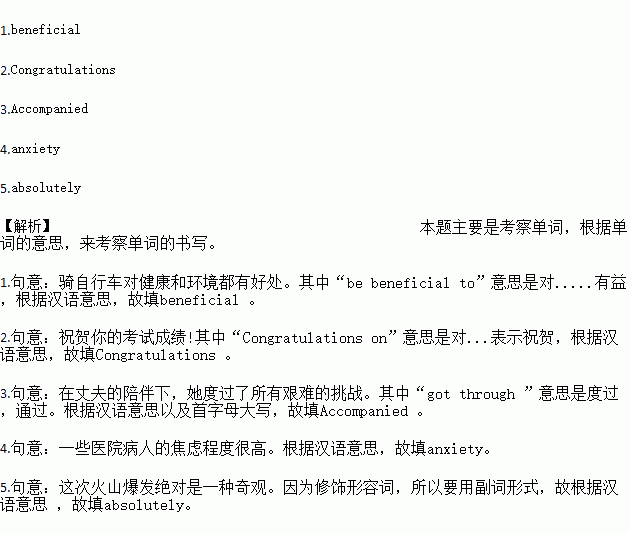题目内容
1.Cycling is highly ____________(有益的)to health and the environment.
2.___________(祝贺)on your exam results!
3.____________(陪伴)by his husband, she got through all the tough challenges.
4.Some hospital patients experience high levels of __________________(焦虑,担心).
5.The eruption was an _______________(绝对,完全)fantastic sight.
练习册系列答案
 开心快乐假期作业暑假作业西安出版社系列答案
开心快乐假期作业暑假作业西安出版社系列答案 名题训练系列答案
名题训练系列答案
相关题目


 ),并在其下面写出该加的词。
),并在其下面写出该加的词。 小区广场上都有很多人在跳广场舞,持续时间长且噪音大,给你和小区里其他人带来了很多的不便。请给小区委员会领导写封信,反映现象及其导致的不便并提出合理建议。
小区广场上都有很多人在跳广场舞,持续时间长且噪音大,给你和小区里其他人带来了很多的不便。请给小区委员会领导写封信,反映现象及其导致的不便并提出合理建议。 world that makes it so active in earthquakes?
world that makes it so active in earthquakes? finally, the earthquake hasn’t to be too deep.
finally, the earthquake hasn’t to be too deep.